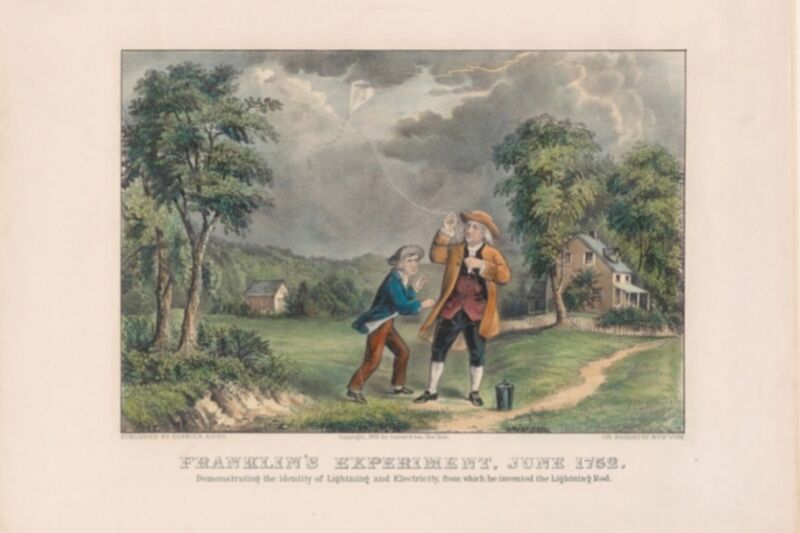Your fave illustration of Franklin’s kite experiment is likely riddled with errors

Enlarge / Hand-colored lithograph published by Currier & Ives in 1876, probably the most widely distributed illustration of Benjamin Franklin's kite experiment. Franklin is wrongly shown to be holding the string in one hand above where the key is attached. (credit: Public domain)
Most Americans are familiar with the story of Benjamin Franklin and his famous 18th-century experiment in which he attached a metal key to a kite during a thunderstorm to see if the lightning would pass through the metal. That's largely due to many iconic illustrations commemorating the event that found their way into the popular imagination and became part of our shared cultural lore. But most of those classic illustrations are riddled with historical errors, according to a new paper published in the journal Science and Education.
Franklin's explorations into electricity began as he was approaching 40 years old after his thriving career as an entrepreneur in the printing business. His scientific interest was piqued in 1743 when he saw a demonstration by scientist/showman Archibald Spencer, known for performing various amusing parlor tricks involving electricity. He soon started a correspondence with a British botanist named Peter Collinson and began reproducing some of Spencer's impressive parlor tricks in his own home.
He would have guests rub a tube to create static and then have them kiss, producing an electrical shock. He designed a fake spider suspended by two electrified wires so that it seemed to swing back and forth of its own accord. And he devised a game dubbed "Treason," whereby he wired up a portrait of King George so that anyone who touched the monarch's crown would be shocked. And he once infamously shocked himself while trying to kill a turkey with electricity.